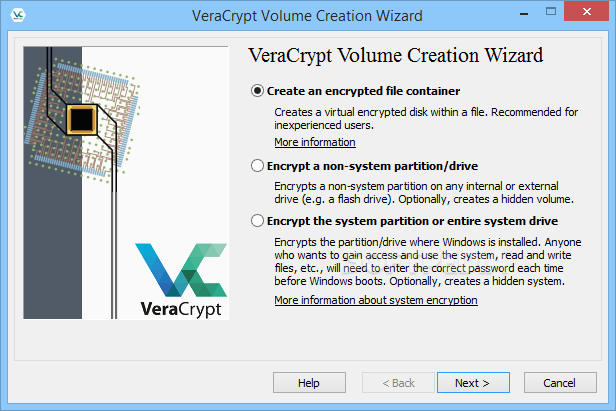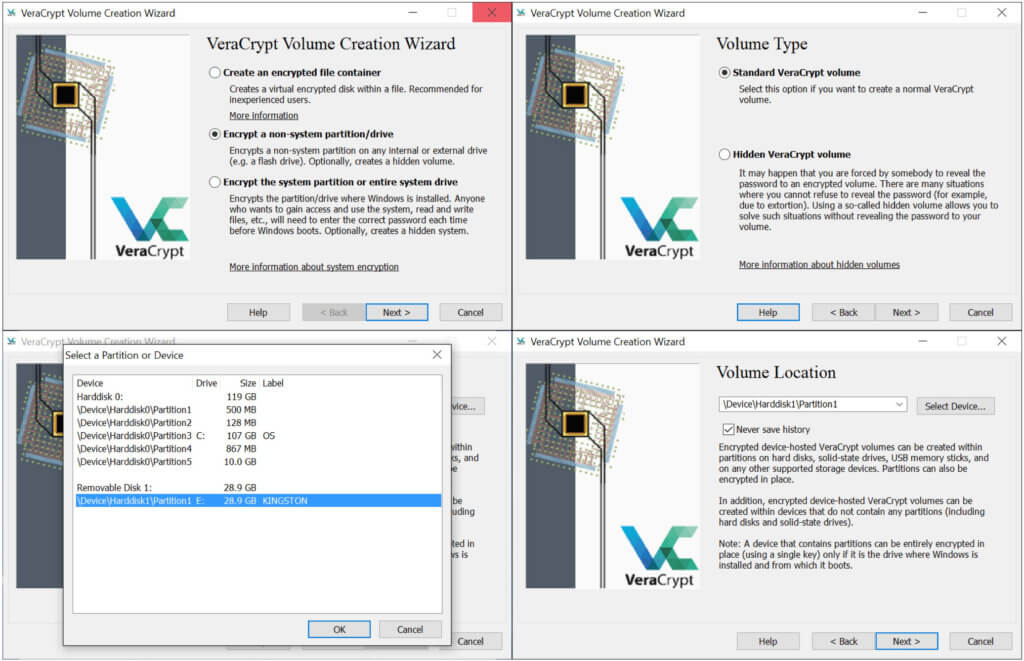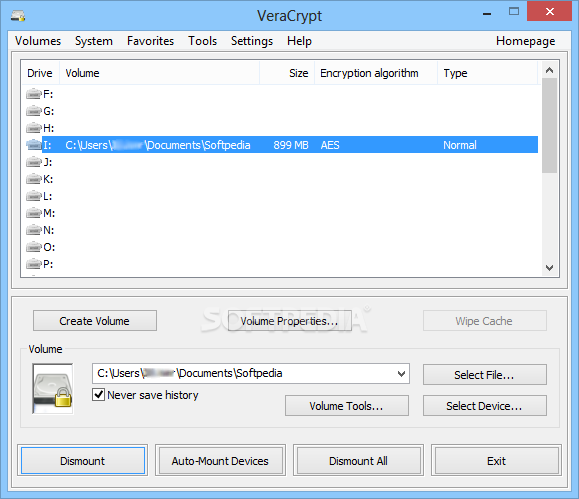
- Veracrypt usb drive how to#
- Veracrypt usb drive serial#
- Veracrypt usb drive software#
- Veracrypt usb drive windows#
some parttition manage apps are not even able to see it, etc.Īnother side effect (for Linux people): In practice you can not format as Ext4 a VeraCrypt partition if you try on windows. also BootIce see them as IFS: and not as HD#: or RM#. Such way of working of VeraCrypt (comes from TruCrypt, etc) causes another rare things, like SmartDefrag not able to see and defragment files on it (Piriform Deflagger can, so can be a bad algorithm on SmartDrefrag).
Veracrypt usb drive windows#
To whom belongs the fault? In part to Windows NTFS that do not cache estructure changes, in part to VeraCrypt for not emulating a device. That causes a huge, very huge, slow down if compared with non-encrypted. so VeraCrypt must encrypt a lot of times something that will be putted on the exact same cluster of the disk. so in practice windows is asking VeraCrypt for encrypting the same structure a lot of times (when small files are written) in a short period of time. but modifing the NTFS estructure is done without cache.

So what happens? Windows writes to the NTFS estructure without write cache, then VeraCrypt do the encryption (yes pipelined) and send the encrypted data to the HDD, then Windows see the device has write cache on so waits a little to write the data. Well, that cache affects only to write operations done on the device, since the device is the physical one, it means for encrypted data written to the HDD, not for un-encrypted data written to the NTFS estructure. Remember if write cache is on, do not unplug without windows informing you can safely eject it. There you can select to fast extract (write cache off) or to better performance (write cache on).On the General tab click on the button to change the configuration.Go to Hardware and select the device on the list (here is the problem with VeraCrypt, it does not create a virtual controller).Select any of thoose, right click and go to properties.Open explorer and go to where you can see root folder of partitions mounted, C:, D:, etc.
Veracrypt usb drive how to#
I am talking about windows write cache, so i will explain how to enable/disable it for people that do not know how:
Veracrypt usb drive software#
with that software writting small files is as fast as writting a big file (if such write cache is enabled on windows). so on windows you can enable and disable its write cache.
Veracrypt usb drive serial#
I had tested with other Encryption software (very expensive) that emulates a whole SAS controller (yes Serial SCSI) and also emulates a whole HDD connected to it.


but, copying small files makes speed goes down to near 1KiB/s with write cache on.


 0 kommentar(er)
0 kommentar(er)
